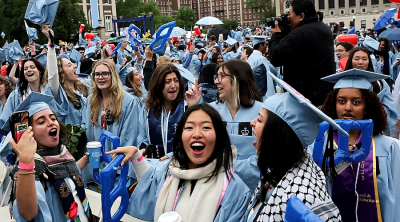
When President Donald Trump vowed to “Make America Great Again”, he anchored that vision in the promise of reviving US manufacturing.
On paper, it’s a compelling pledge—factories returning home, middle-class jobs restored, American pride reignited.
But, beneath the rhetoric lies a sobering question: Can America truly bring manufacturing back without confronting its deeper, structural weaknesses?
The great American productivity slowdown
Once the envy of the world, America’s productivity engine has stalled. Not because of a lack of capital, technology, or innovation—but due to a human capital crisis.
Billionaire investor Ray Dalio captures it bluntly: “The US has 300 million people. The top 1 percent are brilliant—they go to elite schools, invent breakthrough tech, and build unicorns (albeit half of which are started by immigrants). The next 10 percent are high-earning professionals.
“But the bottom 60 percent? Many can’t even read at a sixth-grade level. They’re simply not equipped for high-productivity work.”
His conclusion? “We don’t have a manufacturing workforce. I don’t believe the US can outcompete China in manufacturing in our lifetimes.”
The 60%: Trapped in low-skill service economy
This 60 percent isn’t idle—they’re working. But often in fragmented, low-value jobs: warehouse pickers, delivery drivers, fast-food workers, gig laborers. Many hold multiple part-time roles just to stay afloat.
In deindustrialized towns, real unemployment—including discouraged workers—likely exceeds 15–20 percent, far above official figures.
This is more than a “skills gap”. It’s a productivity trap:
■ Not learning (the education system has failed them)
■ Not earning (wages have stagnated for decades)
■ Not contributing (locked out of value creation)
Meanwhile, inequality has reached record highs.
■ The top 10 percent of Americans now earn nearly 48 percent of all income
■ The bottom 50 percent earn just 13 percent
■ The top 1 percent alone take in 22 percent of national income, up from 11 percent in 1980
■ CEO-to-worker pay has ballooned from 20:1 in 1965 to 344:1 in 2024
China’s workforce strategy: Building human infrastructure
While America debates tariffs and factory subsidies, China has quietly built an army of makers.
■ 200 million skilled workers, including 60 million in high-skilled trades
■ 30 million vocational students, with 1 million graduating yearly
■ A nationwide push to elevate blue-collar prestige—the so-called “craftsman spirit”
■ 45,000+ ‘Little Giant’ SME firms, niche manufacturers supported by local governments
As Apple CEO Tim Cook once said: “We manufacture in China not just for cost—but because they have more skilled engineers and technicians. They can fill many football fields at recruitment fairs. We can’t even fill a room in the US.”
Manufacturing can’t make America great again, unless America first makes Americans productive again.
Why America’s manufacturing revival will fail (without fixing this):
1. Labor math doesn’t add up
US wages: $15–20/hour. Asia: $1–2/hour. Apple’s much-publicized $500 billion investment to create 20,000 US jobs? That’s $2.5 million per job. One source said it will cost US$30,000 to make a single iPhone in the US?
2. Physical reality check
■ 42 percent of American adults are obese, with higher rates among the less educated
■ Chronic diseases (diabetes, hypertension, etc.) weigh heavily on productivity
■ Assertive welfare programs and eroding workplace discipline further reduce competitiveness
3. The missing manufacturing ecosystem
■ In Taiwan, when TSMC works overtime, entire supply chains mobilize in sync
■ In the US, supply chains are fragmented—or missing entirely
■ American workers have a different work culture, and this is a big challenge to manage in a disciplined production line flow factory.
The hard truth: Factories are easy; workers aren’t.
China didn’t just build factories—it built builders. Millions trained to execute complex manufacturing tasks at scale.
The workers are also aspiring for a better life, and they know that self-reliance and grit will get them there, not entitlement.
America, by contrast, excels at building markets—venture capital, start-ups, Wall Street. But no amount of IPOs or trade wars will revive manufacturing without a workforce capable of making things.
The bottom line: Manufacturing can’t make America great again—unless America first makes Americans productive again.
That means Investing in basic education reform, scaling up vocational training and apprenticeships, rebuilding a culture of making, not just marketing or financial speculation.
In other words, return to the real economy. These are momentous task to achieve.
Without it, the real crisis won’t be offshored factories—it’ll be a country permanently split between the productive few and the left-behind many.
And don’t forget: The 60 percent? They still vote.
(Foong Wai Fong is Founding Director of Megatrends Asia. She worked with world-renowned futurist John Naisbitt on Megatrends Asia, published in 2000, which successfully predicted the rise of China and Asia.)
ADVERTISEMENT
ADVERTISEMENT








































